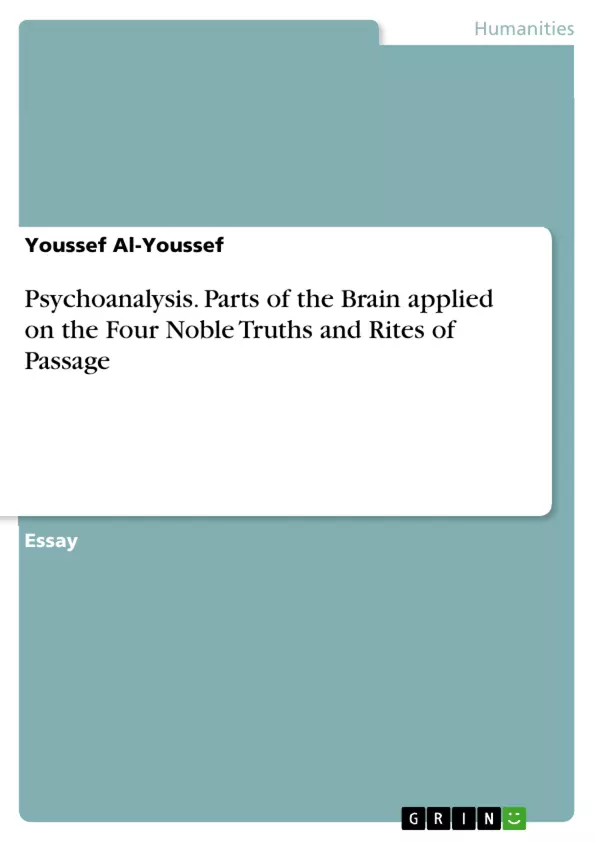This paper associates Buddhist's four noble truths with the three parts of the human brain. it also gives insight about Rites of Passage and applies the three parts with the three steps of intiation in many belliefs. It also links the three parts of the human brain with the three stages of intiation in Victor Turner's theory about Rites of Passage.
Inhaltsverzeichnis (Table of Contents)
- Psychoanalysis
- The Soul Concept
- Buddhism and the Four Noble Truths
- Victor Turner's Theory of Character Development
- Jung and the Archetype
- The Id, Ego, and Super Ego
- The Life Breath and Religion
- The Archetype of Unity with the Life Breath
- Literature as an Alternative Archetype
- Holy Books vs. Literature in Psychoanalysis
Zielsetzung und Themenschwerpunkte (Objectives and Key Themes)
This text explores the relationship between the human psyche and the concept of the "Life Breath," a universal force that connects individuals to the divine or the cosmos. It examines how different belief systems, myths, and literary works offer insights into the human search for meaning and connection to this fundamental principle.
- The role of archetypes in shaping human experiences and motivations
- The relationship between the conscious and unconscious mind, as described by Freud and Jung
- The significance of initiation rituals and practices in different cultures
- The interplay between the id, ego, and super ego in human behavior and development
- The role of literature and religion in serving as alternative archetypes for the Life Breath
Zusammenfassung der Kapitel (Chapter Summaries)
The text delves into the concept of the soul, its connection to the universe, and how different belief systems, particularly Buddhism and Shamanism, view the pursuit of unity with the Life Breath. It also explores Victor Turner's Theory of character development and how it aligns with Freud's theory of the id, ego, and super ego.
Jung's concept of archetypes is introduced, highlighting how myths and symbols serve as unconscious expressions of universal urges and drives. The text then analyzes the role of the id, ego, and super ego in human behavior, emphasizing the super ego's aspiration for connection with the Life Breath, which is represented by God in Abrahamic religions.
The text explores how different practices, such as fasting, meditation, and rituals, serve as means of achieving unity with the Life Breath, drawing parallels between ancient beliefs and modern-day religious practices.
The text concludes by examining literature as an alternative archetype for the Life Breath, arguing that literary works can offer readers moral messages and opportunities for self-discovery. It emphasizes the importance of both holy books and literature in providing psychological insights and promoting spiritual growth.
Schlüsselwörter (Keywords)
The main keywords of this text include: psychoanalysis, archetypes, Life Breath, id, ego, super ego, initiation, myths, religion, literature, Buddhism, Shamanism, Victor Turner, Jung, Freud, Holy Books, and the human psyche.
- Quote paper
- Youssef Al-Youssef (Author), 2015, Psychoanalysis. Parts of the Brain applied on the Four Noble Truths and Rites of Passage, Munich, GRIN Verlag, https://www.grin.com/document/294886



